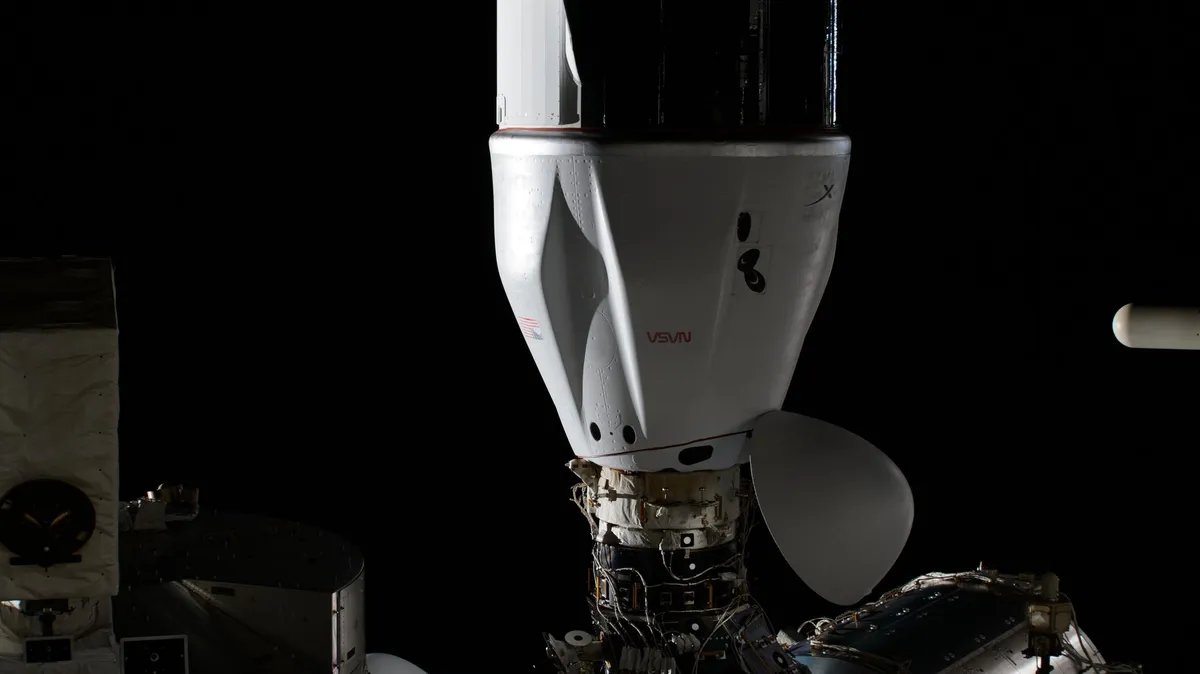
NASA, in collaboration with its international partners, is preparing for the return of scientific research samples and essential hardware aboard a SpaceX Dragon spacecraft. The spacecraft is scheduled to depart from the International Space Station (ISS) on Thursday, May 22. Live coverage of the undocking and departure will commence at 11:45 a.m. EDT on NASA+, offering viewers a chance to witness this significant event.
The Dragon spacecraft is set to undock from the zenith, or space-facing, port of the Harmony module aboard the ISS at 12:05 p.m. EDT. Once undocked, the spacecraft will use its thrusters to move a safe distance away from the station, all under the command of SpaceX’s Mission Control based in Hawthorne, California. After its journey through Earth's atmosphere, the Dragon spacecraft will splash down on Friday, May 23, off the coast of California. While NASA will provide updates via its space station blog, please note that there will not be a livestream of the splashdown.
The Dragon spacecraft is returning to Earth filled with nearly 6,700 pounds of supplies, scientific investigations, equipment, and food. This mission, known as SpaceX's 32nd commercial resupply services mission, began with a launch on April 21 from Launch Complex 39A at NASA’s Kennedy Space Center in Florida. It successfully arrived at the space station on April 22.
Among the valuable scientific hardware and samples being returned is the MISSE-20 (Multipurpose International Space Station Experiment). This experiment exposed various materials to the harsh conditions of space, including radiation shielding and detection materials, solar sails, reflective coatings, and ceramic composites. By studying how these materials respond to factors such as ultraviolet radiation, atomic oxygen, and thermal cycling, researchers can enhance our understanding of materials for future space missions.
Additionally, the Astrobee-REACCH (Responsive Engaging Arms for Captive Care and Handling) system is making its journey back to Earth after successfully demonstrating its ability to grasp and relocate objects in space. This technology utilized Astrobee robots equipped with tentacle-like arms and adhesive pads to capture space objects of varying geometries and surface materials. The potential applications of this technology include addressing challenges related to end-of-life satellite servicing and orbital debris removal, ultimately maximizing satellite longevity and safeguarding spacecraft in low Earth orbit.
In addition to the scientific investigations, books from the Story Time from Space project will also return to Earth. Crew members aboard the space station read five children’s books focused on science, technology, engineering, and mathematics (STEM) topics. They recorded themselves conducting science experiments, with the video and data subsequently downlinked to Earth and shared in a dedicated video library along with educational materials.
Furthermore, hardware and data from a one-year technology demonstration called OPTICA (Onboard Programmable Technology for Image Compression and Analysis) will return. This cutting-edge technology aims to enhance the transmission of real-time, ultra-high-resolution hyperspectral imagery from space to Earth. Through valuable insights on data compression and processing, OPTICA seeks to lower the bandwidth required for communication, thereby reducing costs associated with space-based imaging systems without compromising data quality. This technology holds particular promise for improving disaster response services that depend on Earth observations.
For over 24 years, the International Space Station has served as a platform for humans to live and work continuously in space, advancing scientific knowledge and conducting critical research that benefits humanity and our planet. As NASA looks forward to deep space missions under the Artemis campaign and prepares for future human exploration of Mars, research conducted aboard the ISS will continue to play a vital role in supporting the future of human spaceflight and expanding commercial opportunities in low Earth orbit and beyond.
For more information about the International Space Station and its ongoing missions, visit NASA's official website.
Contact: Julian Coltre / Josh Finch Headquarters, Washington 202-358-1600 julian.n.coltre@nasa.gov / joshua.a.finch@nasa.gov